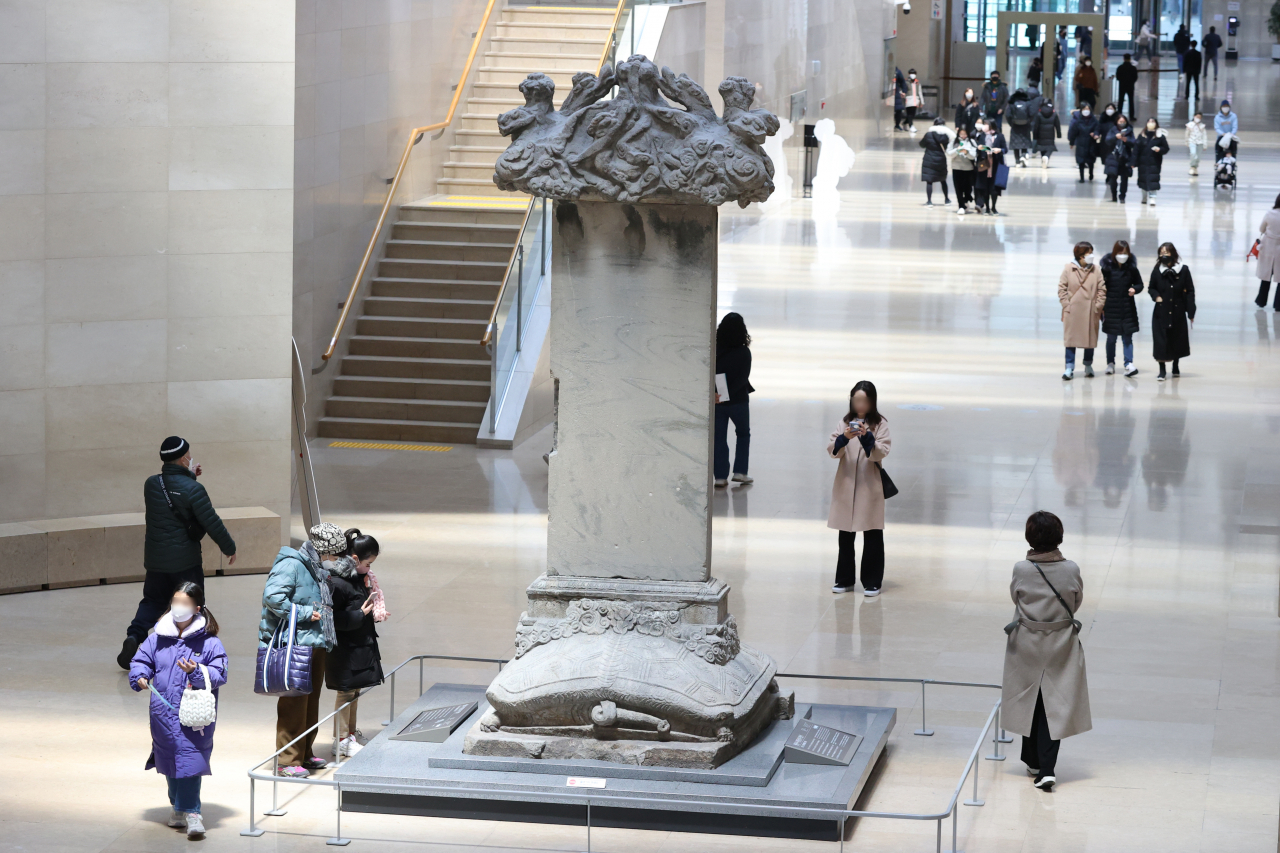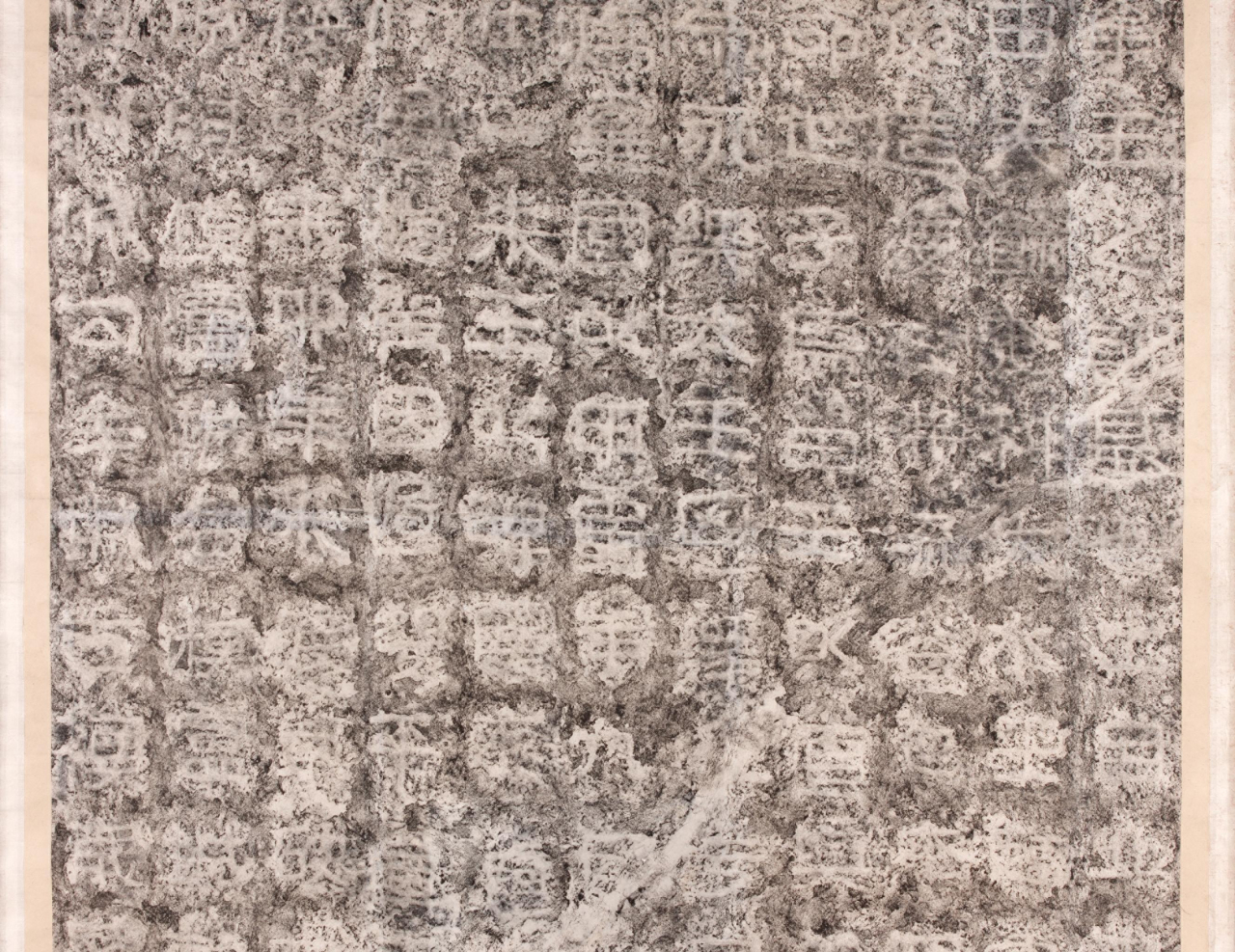 |
Visitors walk through the main concourse of the National Museum of Korea in Yongsan, central Seoul, on Jan. 30. (Yonhap) |
The National Museum of Korea announced plans to improve its exhibition on the period of the Goguryeo Kingdom, including a complete renovation of the current Goguryeo Room under the Permanent Exhibition Hall of Prehistory and Ancient History. The project is set to be completed by November 2024.
The museum unveiled the plan for this year’s research and exhibitions in a press release Wednesday, which also includes a project on Wolji Pond in Gyeongju, North Gyeongsang Province, the ancient capital of the Silla Kingdom, as well as a touring exhibition of the Lee Kun-hee collection.
Goguryeo (37 BC-668 AD) was one of the three kingdoms of Korea, along with Baekje and Silla. Its territory extended from present-day northeast China down the Korean Peninsula.
"The Goguryeo exhibition is very small compared to other historical periods, with only some 120 pieces on display," Yang Seong-hyeok, the researcher in charge of the Goguryeo period at the museum, told The Korea Herald.
"Our museum storage has Goguryeo roof tiles and mural pieces from tombs that were transferred from the museum run by the Japanese General Government of Korea after Korea's liberation from Japan. The relics were found in the territories of China and North Korea during the Japanese colonial period."
Yang said that the NMK's Goguryeo team will conduct thorough research into all its pieces in storage and publish a report on the findings in an academic journal by the end of this year.
A rubbed copy of the epitaph on the monument for King Gwanggaeto, which is more than 6 meters tall, cannot be displayed at the permanent exhibition hall because of the ceiling's height. When the renovation is completed, the epitaph will be available for viewing at the hall.
 |
Rubbed copy of the epitaph on the monument for King Gwanggaeto at the National Museum of Korea (Yonhap) |
The Wolji Pond project, an initiative by the Gyeongju National Museum, aims at full research into the museum's approximately 33,000 artifacts discovered at Wolji Pond. The Wolji Pond was a secondary palace created in 674 for the crown prince of Silla.
Currently, some 1,600 pieces are on display at the museum's Wolji Hall.
"Wolji Hall's exhibition highlights relics of the Silla royals. but there are many Buddhist relics and other daily items," Cho Hyo-sik, a researcher at the Gyeongju National Museum, told The Korea Herald. Cho said that the plan is to hold thematic exhibitions upon completion of the research.
Meanwhile, part of Lee Kun-hee's art collection donated to the NMK will tour Daegu and Cheongju, North Chungcheong Province, this year.
The National Museum of Korea and the National Museum of Modern and Contemporary Art, Korea, are also planning special exhibitions of Lee Kun-hee's collection abroad in 2025 and 2026. The exhibitions will be held at the Smithsonian National Museum of Asian Art in Washington, the Art Institute of Chicago and the British Museum in London.
Around 250-300 pieces of works from Lee Kun-hee's collection will be on display depending on each museum's needs, according to an NMK official.







